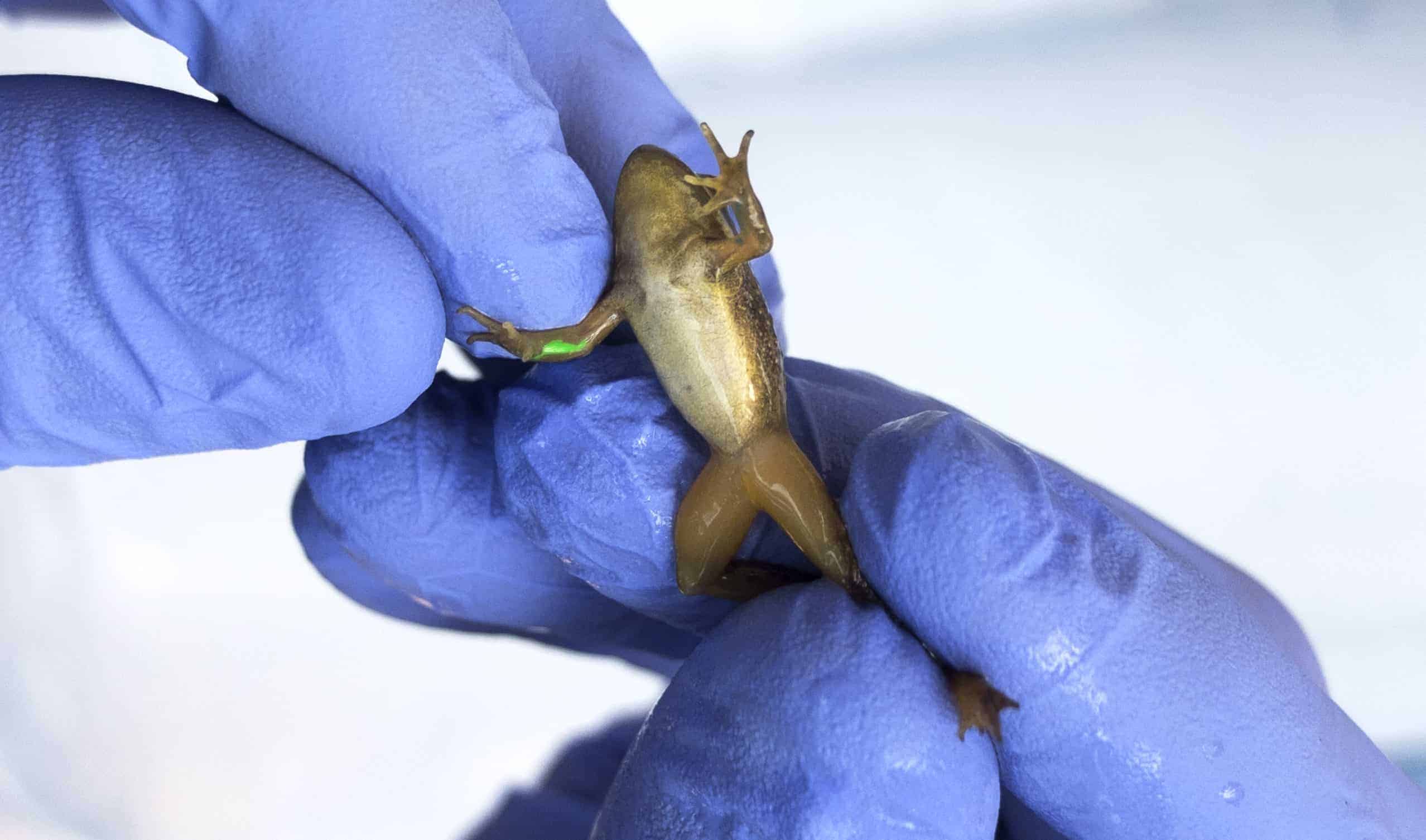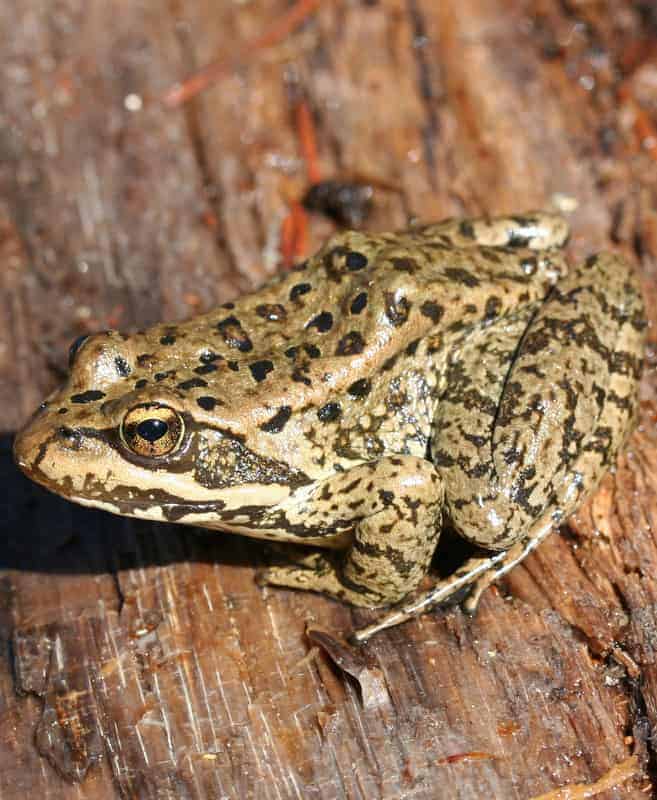Share this article
Anti-fungal treatment improves frog survival
Treating frogs in one of their most vulnerable moments may help them survive the onslaught of a deadly fungal disease.
Cascades frogs are one of many species whose populations have been decimated by the chytrid fungus Batrachochytrium dendrobatidis. In Northern California, at the southern end of the species’ range, the pathogen has been particularly brutal.
“They used to be quite common, and now they are completely gone from these lakes and ponds,” said Jonah Piovia-Scott, an associate professor of biological sciences at Washington State University.
In the Southern Cascades Range in California, Cascades frogs (Rana cascadae) are now only found in wet meadows—a type of environment that is typically suboptimal for the species. “Breeding in wet meadows is often sketchier because you are less likely to find ponds that hold water throughout the year,” Piovia-Scott said.
The U.S. Fish and Wildlife Service is currently reviewing the species’ listing status. In an effort to save remaining populations, Piovia-Scott and his colleagues looked at whether antifungal treatments might boost frog survival.

A juvenile Cascades frog with an implanted green tag. Credit: Michael Scott
In the study published recently in Conservation Science and Practice, the researchers described how they captured frogs just after they metamorphosed from tadpoles. In 2018, they captured 97 of these young frogs from three populations near Lassen Volcanic National Park and brought them to a centrally located campsite. They placed each of them in a chemical bath that contained the antifungal chemical itraconazole for five minutes per day for six days, leaving them in containers at the campsite for the rest of the period.
They then injected a colored polymer under the skin of each frog that would later identify the frogs as having been treated and released them back where they were found. The team also captured an additional 146 recently metamorphosed frogs, marked them with a different color, and released them as a control population without treatment.
The following summer, the researchers returned and surveyed frogs in these three areas to estimate their survival. They found that 26 of the treated frogs had survived, and only nine of the untreated frogs survived. The researchers also used a model to account for the frogs that survived but were not found by researchers that summer. Overall, these models estimated that about 50% of treated frogs survived their first winter, while only 10-12% of untreated frogs survived.

Adult Cascades frogs may be able to resist chytrid if they survive early stages of life. Credit: Adam Clause
Making it through the first winter is especially important for the amphibians because recently metamorphosed frogs are in a vulnerable state. “Mortality rates are generally high even in the absence of disease,” Piovia-Scott said.
But if wildlife managers can help the frogs get through that first winter, survival improves even from frogs infected by the fungus as adults.
“[Adult frogs] don’t appear to die from it as readily,” Piovia-Scott said. “If we can get them through that vulnerable stage, they apparently do pretty well.”
By boosting survival of juveniles and thereby improving recruitment, researchers might be able to reverse the steep decline experienced by Cascades frogs in Northern California, he said.
This technique may work on more species besides just Cascades frogs, Piovia-Scott said, since many amphibians are vulnerable to the fungus after they change from tadpoles or larvae to small adults. Yet the treatment won’t solve the chytrid problem in the longer term, he said. Instead, it’s more like a temporary fix that gives researchers more time to develop other plans for frog conservation.







